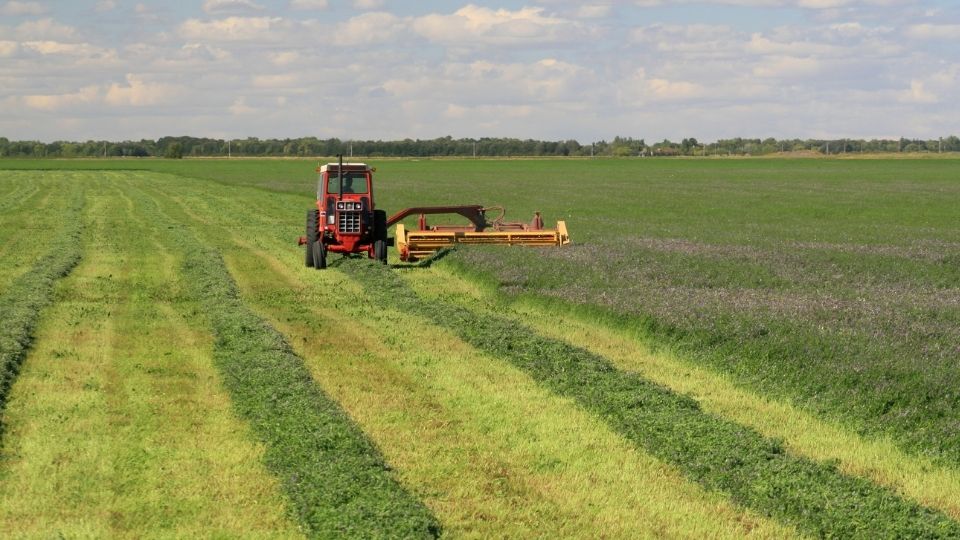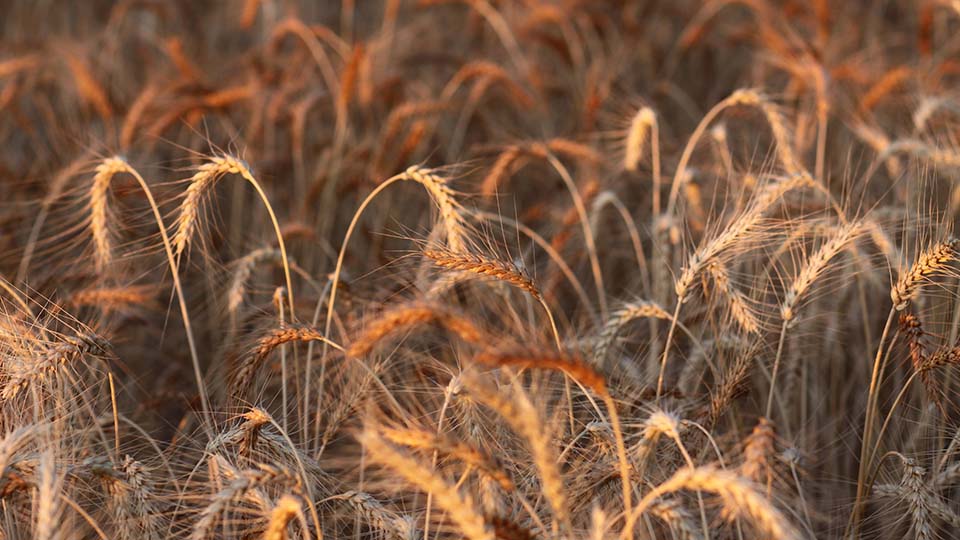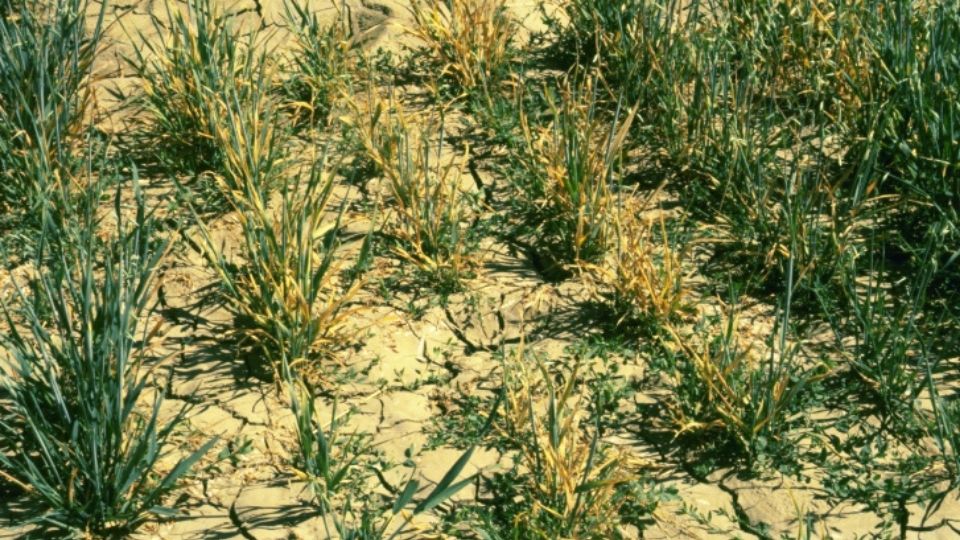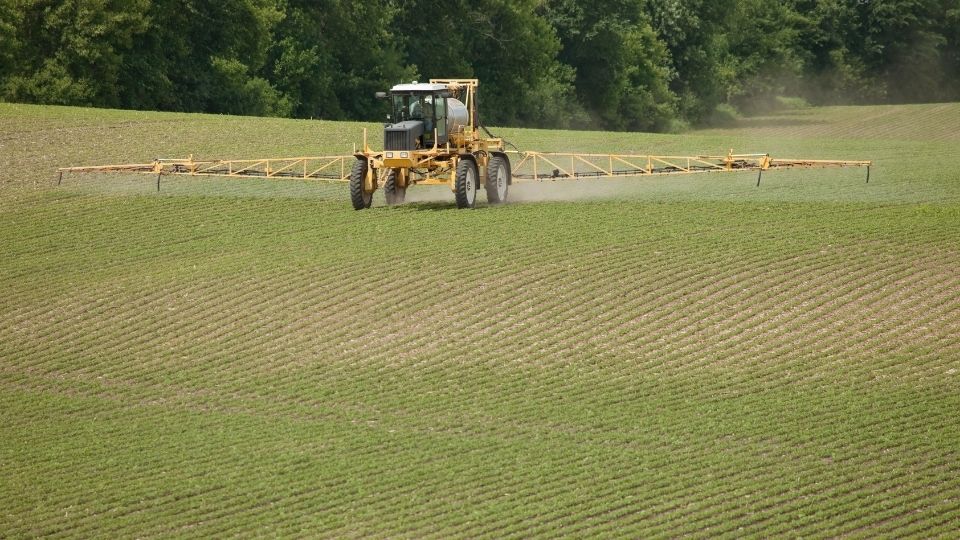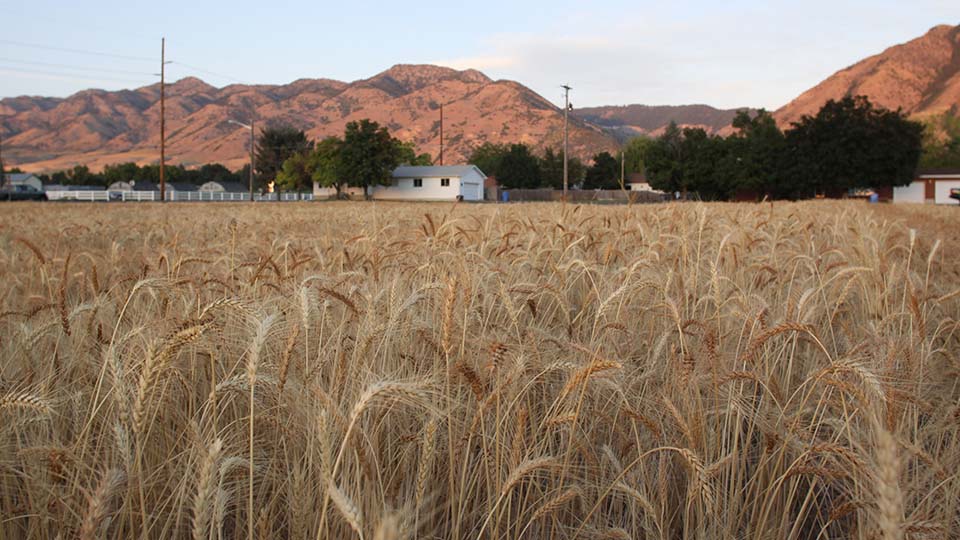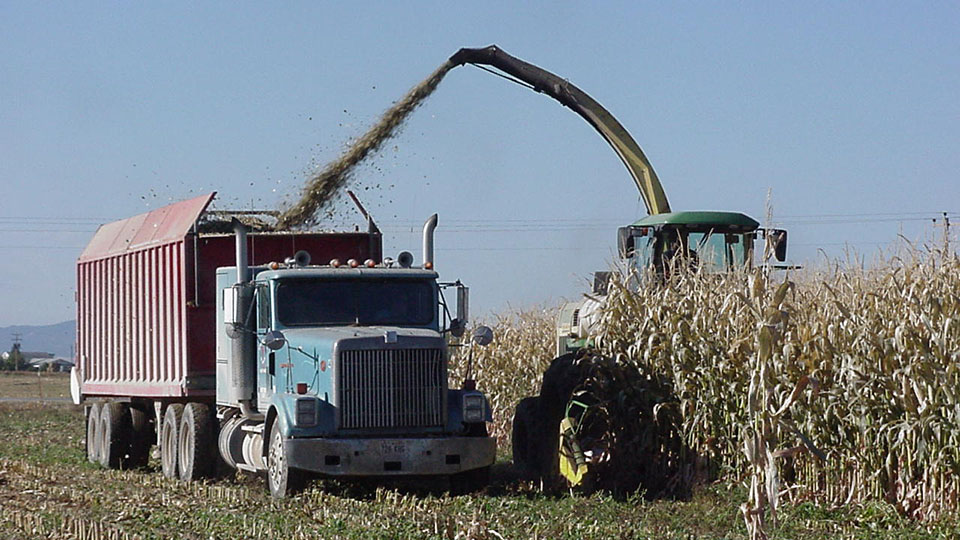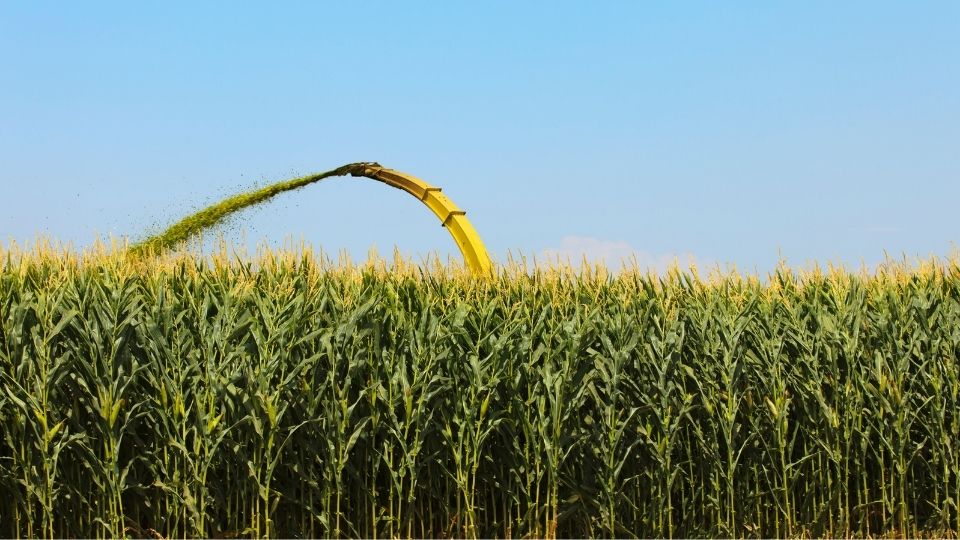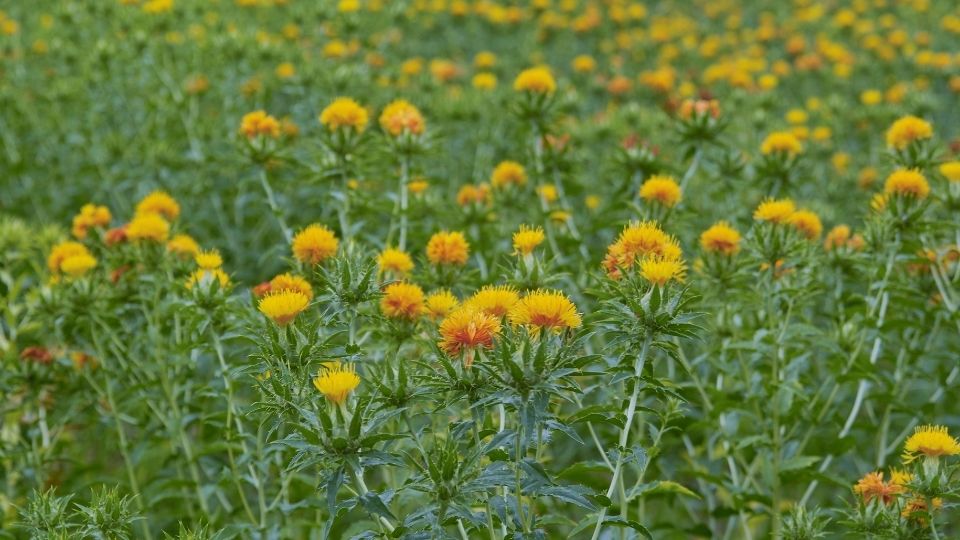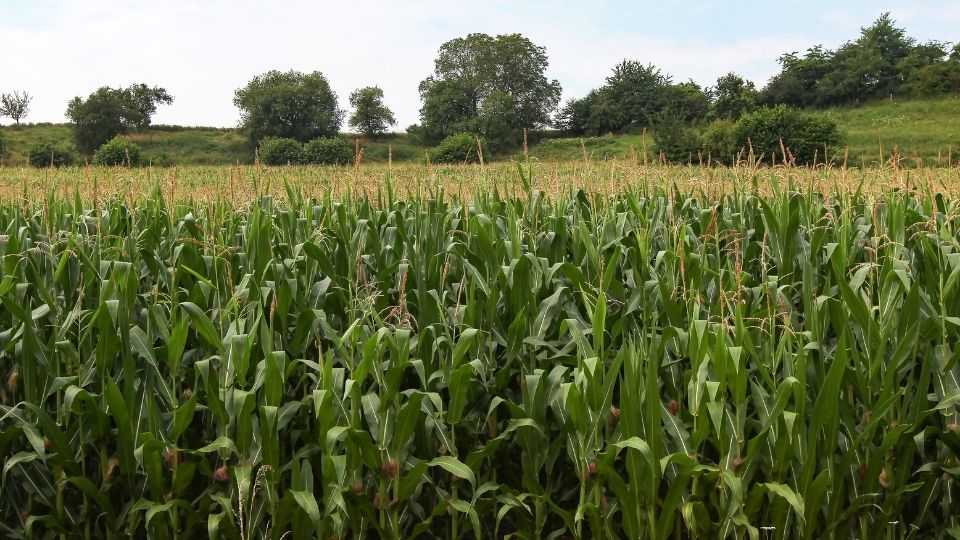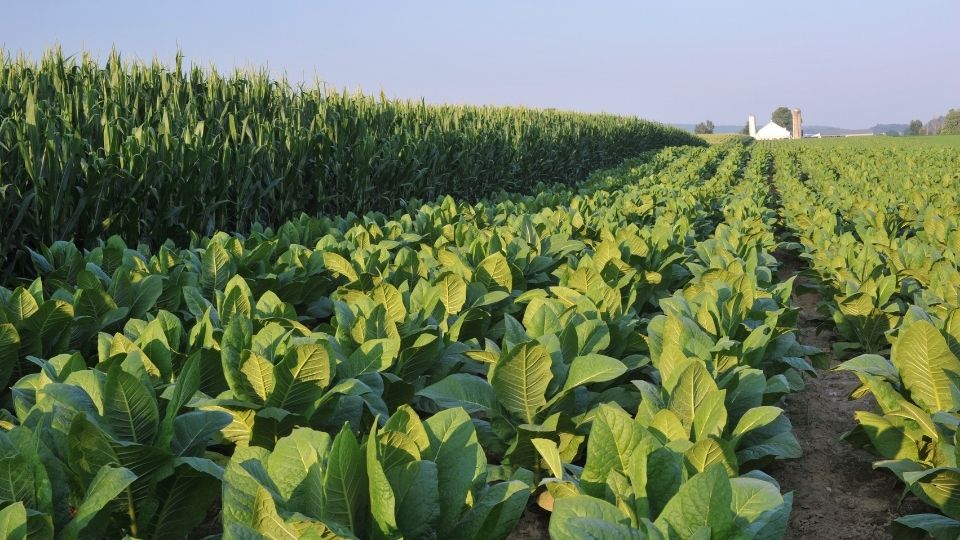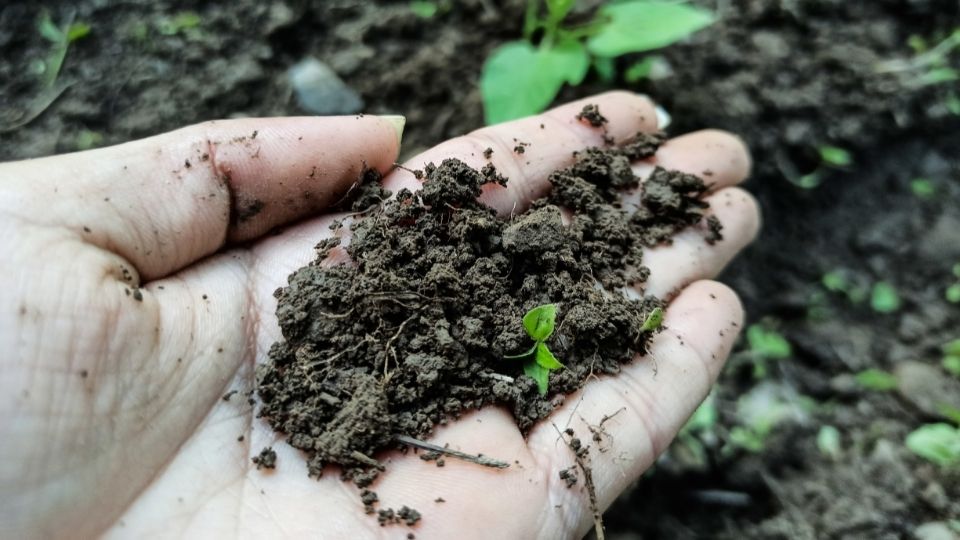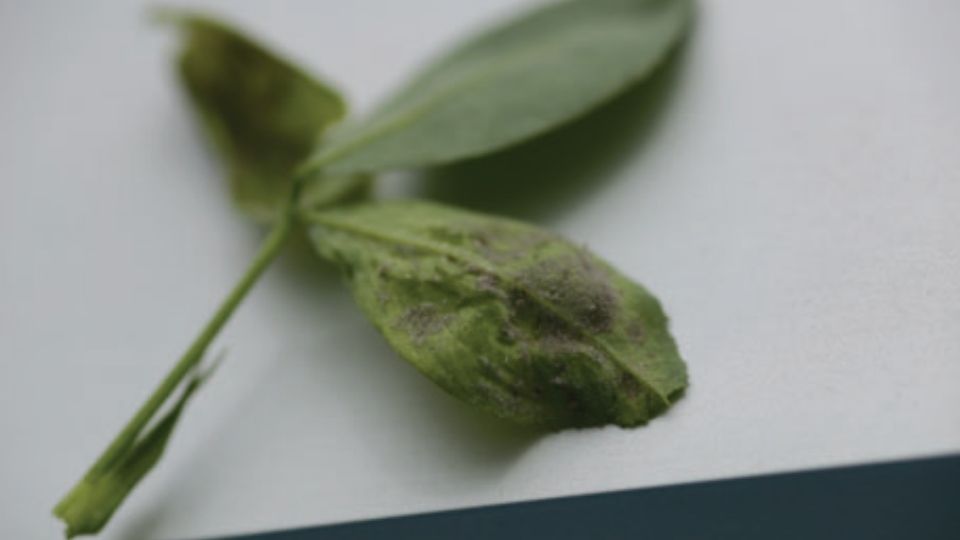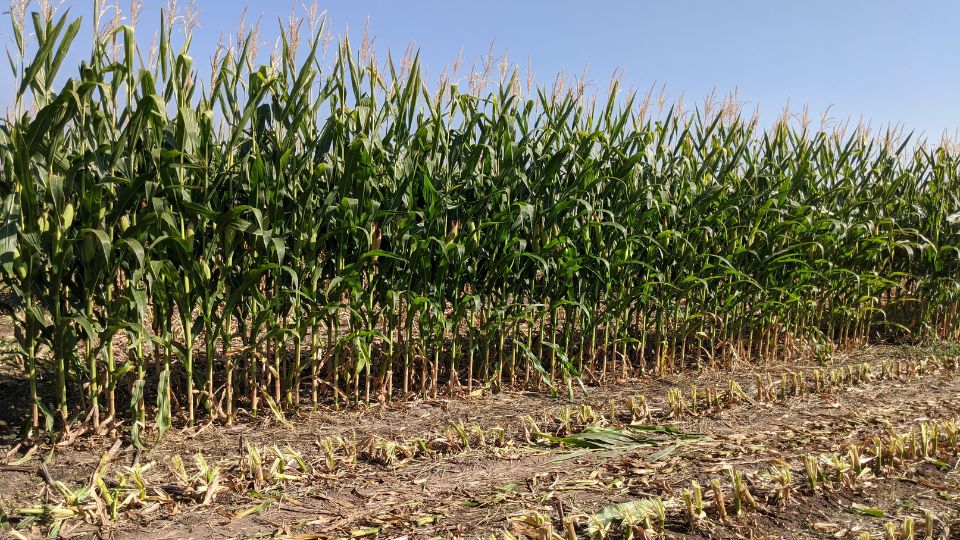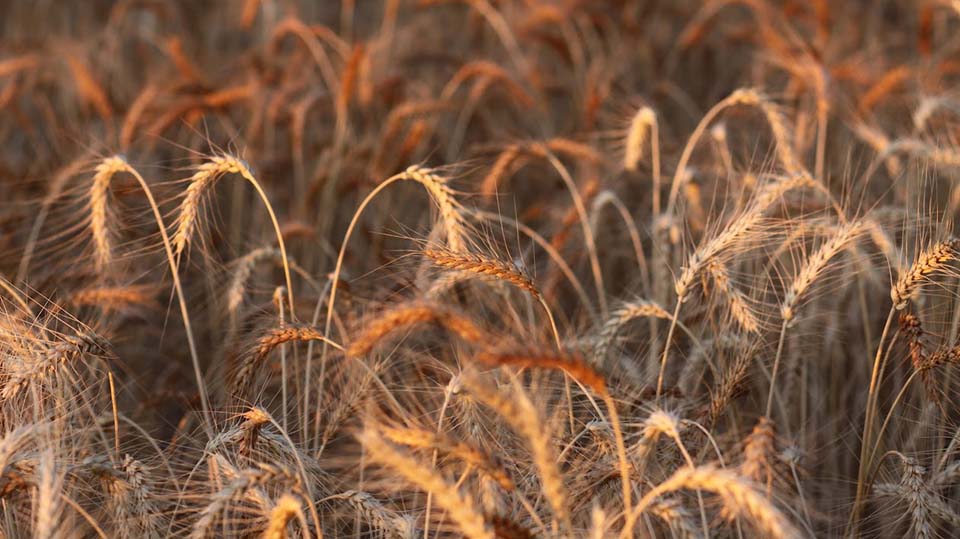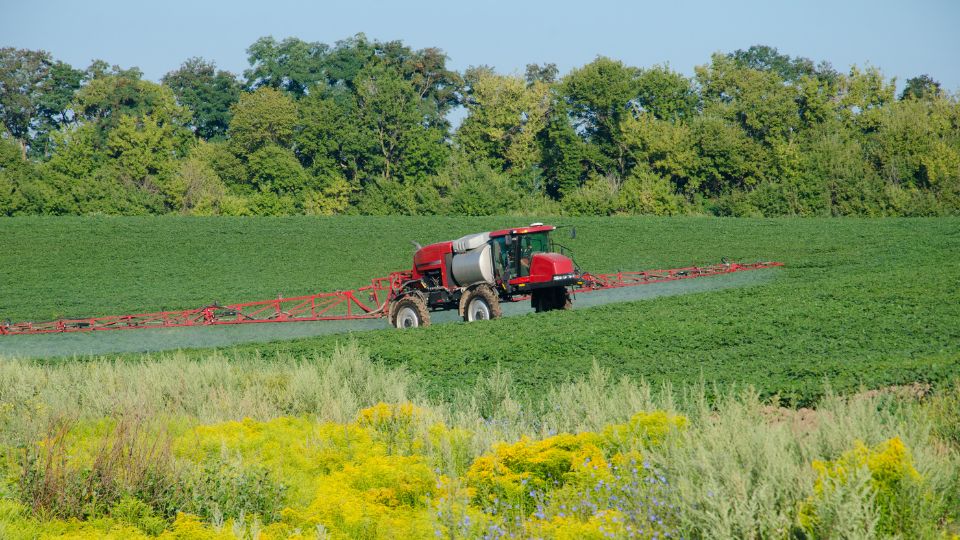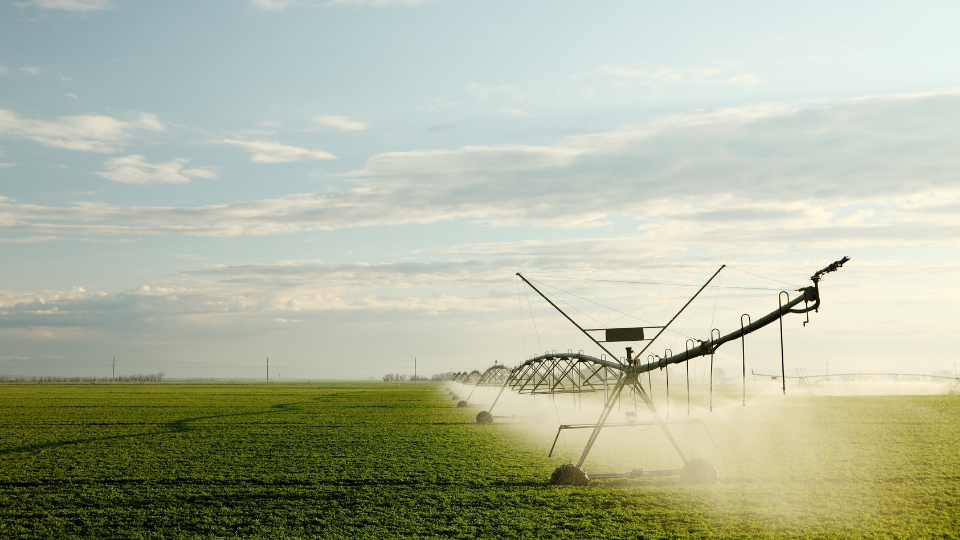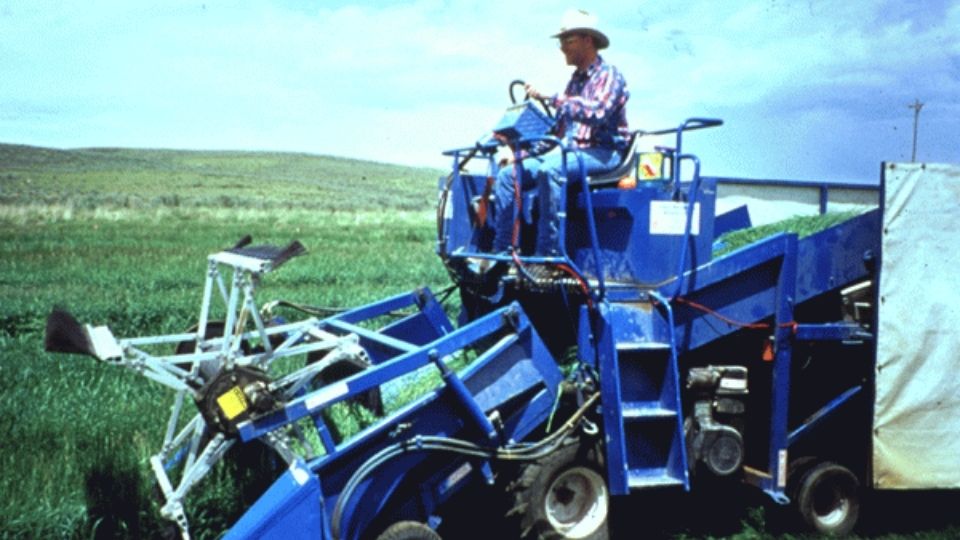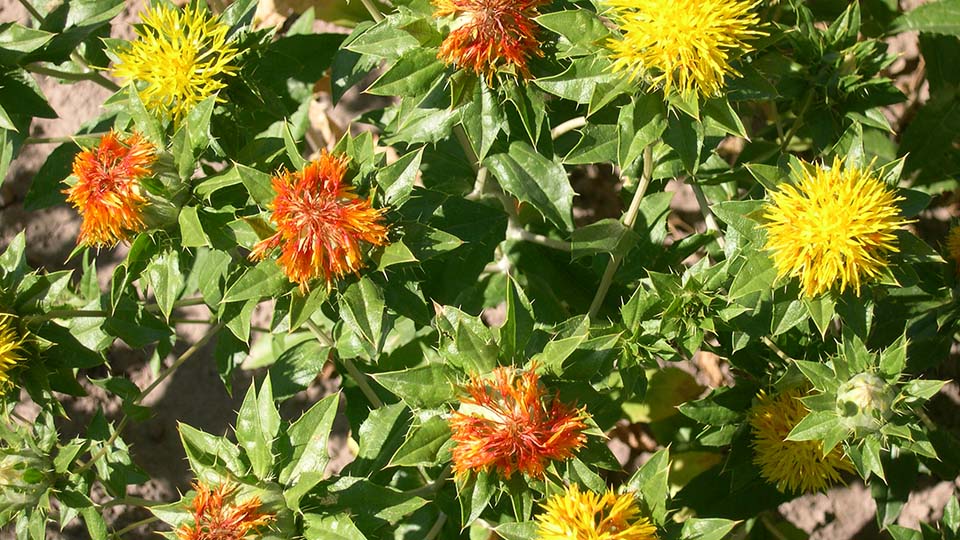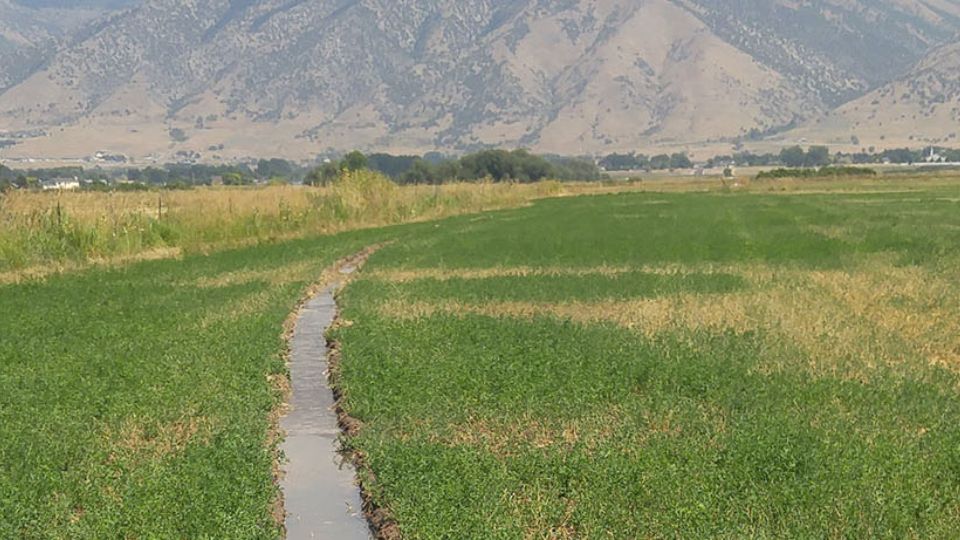Speeding Snowmelt to Control Snow Mold
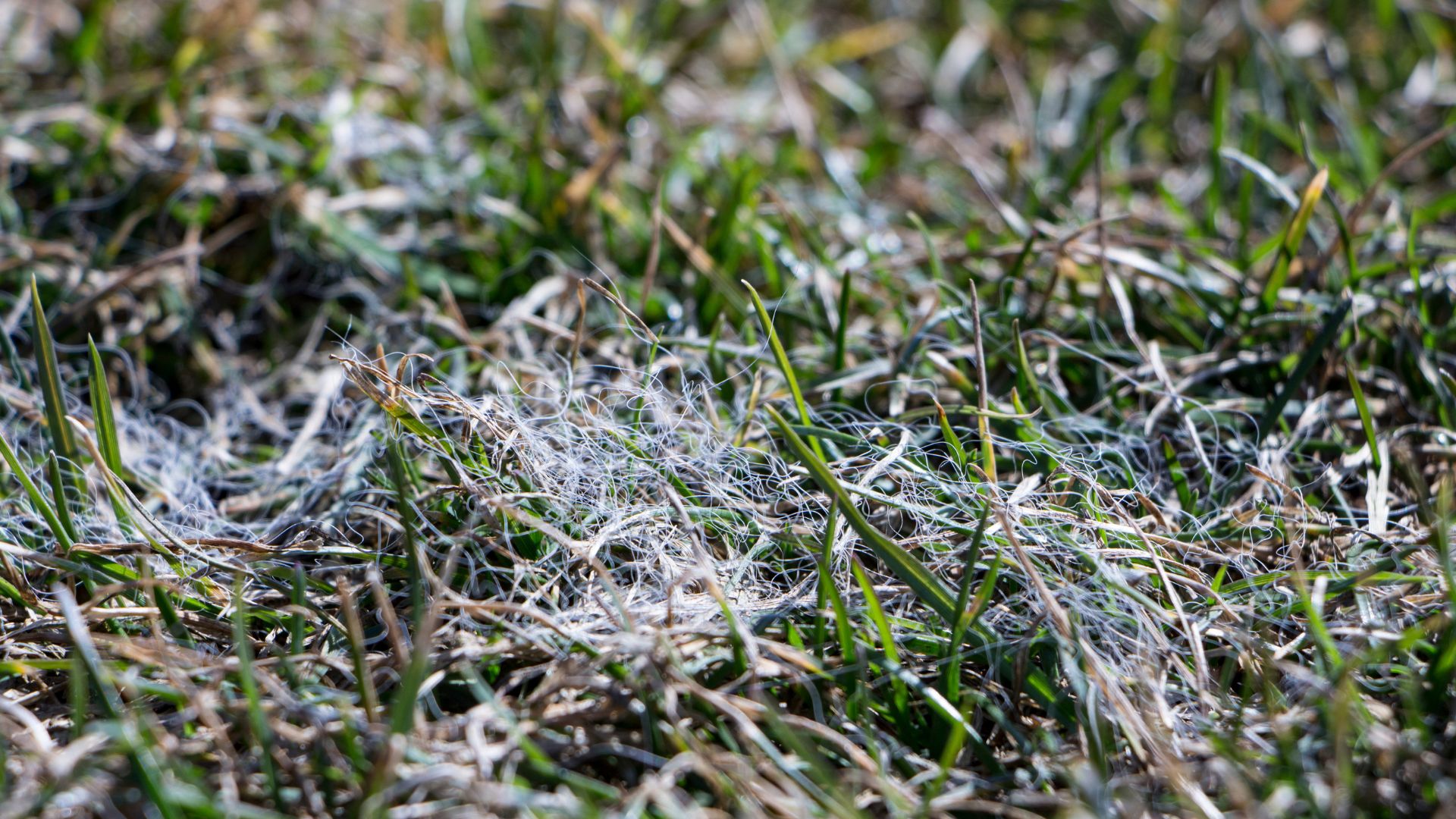
The high level of snowpack in the winter of 2022–2023 created a renewed interest in speed-melting snow to prevent snow mold on winter wheat crops, golf courses, and homeowners’ lawns. Snow molds are diseases caused by fungi growing under snow cover or in cool, wet weather. Winter wheat can be infected by three types of snow molds, while turf grasses can be infected by two kinds of snow molds. Plants will have a bleached color for pink snow mold or a thin layer of white or gray mycelium leaving the plants gray or white after they dry out for gray snow mold. This fact sheet will discuss ongoing research in Utah aimed at using soil amendments to speed the melting of snow to reduce snow mold pressure for small grains.
Speed-Melting Research

Early research at Utah State University to control snow mold under 12 inches of snow in winter wheat research plots in Logan, Utah, used a product called lampblack, which is a finely powdered black soot from incomplete combustion of carbonaceous materials. The product was applied using a knapsack duster to winter wheat at a rate of 7 to 9 pounds/acre. Within 3 days, the treated area was bare of snow and snow mold was immediately halted while the untreated area remained under snow for another 2 weeks. Another product they tried in the spring of 1969 was coal-burning furnace ash applied aerially with a crop duster airplane. This product was relatively easy to find at the time and very lightweight.
Researchers applied the fly ash at a rate of 200 pounds/acre on approximately 12 inches of snow on March 26. The snow was again melted in 3 days; however, the snow mold had continued to grow under the snow and the winter wheat plots were a complete loss. It was estimated that they should have applied the product 3 to 4 weeks earlier since snow mold spreads quickly under ideal conditions. The conclusion was that a lower rate of 100 pounds/acre would be sufficient for snow removal compared to the 200 pounds/acre used (Dewey & Nielson, 1971).
Further research conducted from 1975–1985 at the Blue Creek Research Farm in Box Elder County, Utah, found that snow mold in Utah occurs when snow is deeper than 12 inches and remains covered for 70 days or longer. This research also identified that any time the soil is insulated by snow preventing the soil from freezing, it creates the perfect environment for snow mold to grow and spread. Between 1975 and 1985, several application methods were also explored; the most effective method was application by a snowcat equipped with a fertilizer or sand spreader mounted on the rear, powered by a small engine (Figure 1). In 1998, the snow depth was 18 inches by mid-March, and the field was treated using dry humic acid. This study showed an average increase of 16 bushels/acre in wheat yield in treated plots versus untreated yields over 8 years that data were collected (Cartee, 2013).
Application and Methods
In 2023, it was difficult to find furnace ash or petroleum coke fly ash. However, dry humate was available locally and was a less expensive source for snow removal. The snowcat used for application was downsized to a Polaris Ranger ATV. Snow tracks were purchased and installed on the ATV. A Saltdogg electric poly hopper spreader was installed in the bed of the ATV (Figure 2). The spreader allowed for an independent auger and spinner speed. This new feature allowed for the spinner speed to be adjustable, and it was set to full speed and the auger speed was adjusted to half speed while traveling at 5 miles/hour. The hopper also had an agitator to keep the product dispensing properly.

Saltdogg Spreader
Photo by Eric Galloway
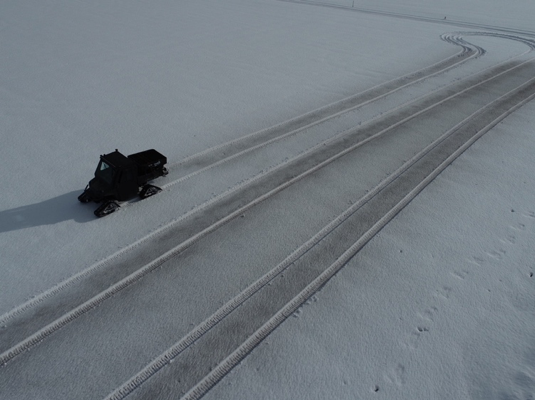
Figure 3. Drone Photo of ATV Application, March 2023
Photo by Paul Harris
On March 14, 2023, humate was applied to fields in Logan, Utah, to remove 10 to 12 inches of snow on winter wheat and on a putting green. Researchers applied the humate to an alfalfa field test area first to calibrate the spreader and the ATV (Figure 3). The first snow depth measurements were collected 4 hours after application, and the treated areas had 1 inch less snow depth than the nontreated areas. The snow depth was measured 2 days later and there was a 4-inch reduction in snow depth in the treated areas. Some areas of bare ground were observed outside the measurement area but within the treated area (Figure 4). It is important to note that rain and overcast conditions occurred the day after application and prevented snowmelt as quickly as the first day. Figures 4 through 7 show how quickly snow can melt in 8 hours on a bright, sunny day. The untreated area still had 7 to 8 inches of snow on the field. On the fifth day, the snow had entirely melted in the areas with humate treatment. Snow was still present for an additional 21 days in untreated areas, a snow storm on March 28, 2023, added an additional 1.3 inches of snow to the treated area (Figure 8).
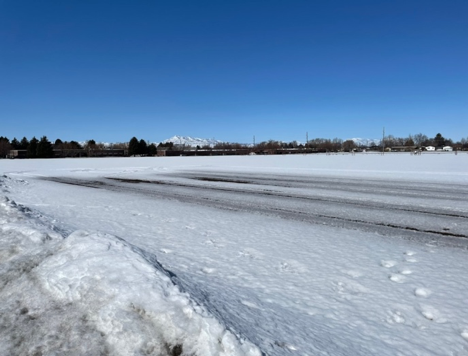
Figure 4. Two Days After Application
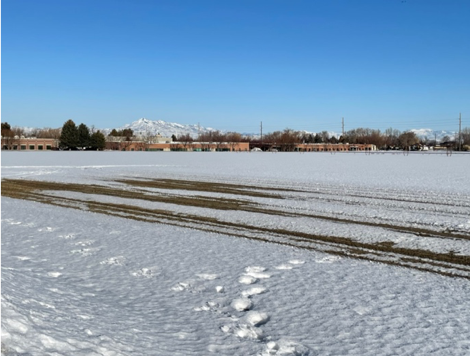
Figure 5. Morning of Day 3 After Application

Figure 6. Afternoon of Day 3 After Application
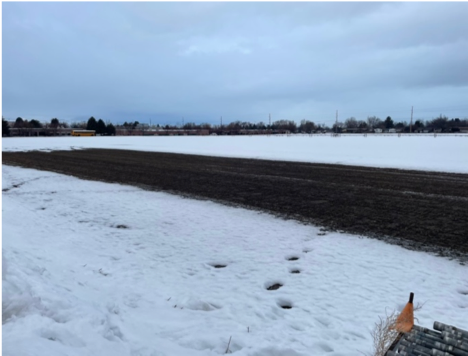
Figure 7. Day 5 After Application
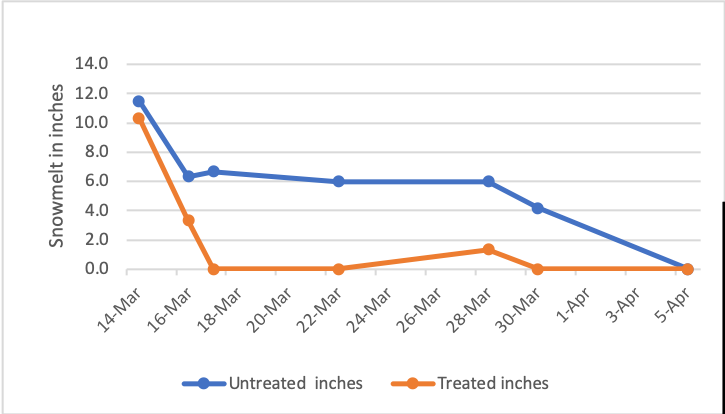
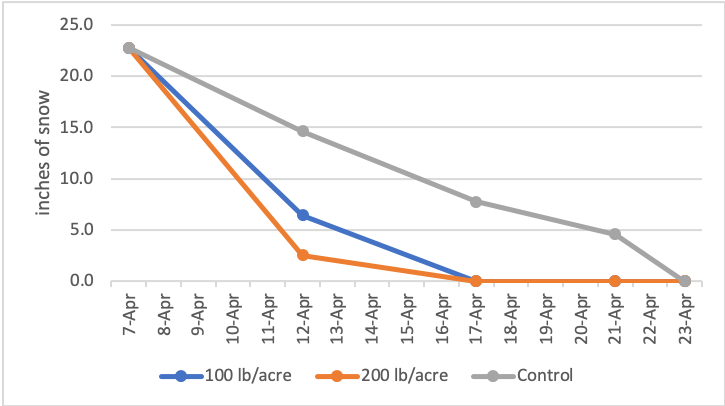
Figure 9. Blue Creek Research Farm Snowmelt
On April 7, 2023, humate was applied at the Blue Creek Experiment Station on 22.8 inches of snow. Application rates of control, 100 pounds/acre and 200 pounds/acre, were randomized in four replications. Snow was removed from the treated area 7 days before the untreated area (Figure 9).
Lessons Learned
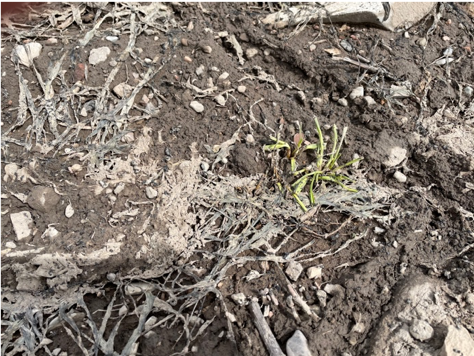
Figure 10. Snow Mold-Infected Plants and Single Plant Uninfected, April 17, 2023, Blue Creek, Utah
Producers will need to scout winter wheat fields by early March to determine if the ground is thawed and when and if to apply humate or other melting agents to the snow to speed the melting process. Use the 70 days of snow cover and the rule of thumb of 12 inches or more of snow by early March as a rough guide. To test for possible snow mold conditions, use a yardstick or metal rod to push through the snow and feel the soil hardness. After pushing through the snow, you will either feel a hard surface if the soil is frozen or more resistance as the yardstick pushes into the soil if the soil is thawed. The tip of the yardstick will be covered with wet soil if the soil is thawed. You can also remove the snow by hand and visually see the soil and snow mold.
After an area is treated and snow has been removed from the area, any snow received afterward melts faster than areas that have not been melted.
Early plantings with large amounts of biomass saw more signs of infection than later plantings with very little growth before snowfall. Figure 10 shows a single plant that survived and plants infected by snow mold.
Since the need for applying humate is dependent upon the snow received each winter, it is important to select cultivars that are resistant to snow mold and tested in your area for resistance. If varieties are susceptible, applying a darkening agent to absorb soil radiation and increase snowmelt can be highly effective at stopping snow mold growth.
Ongoing studies are being conducted to measure the impact of snow mold on wheat production losses, the effectiveness and economics of using humate and possibly other products to melt snow, and to refine application rates and methods. These results will be incorporated into this and other materials as they become available.
Photo Credit
All photos are by Justin Clawson unless otherwise noted.
References
-
Cartee, R. (2013). Non-Irrigated crop production in Utah [Utah Agriculture Experiment Station Research Report No. 219]. Utah State University.
-
Dewey, W. G., & Nielson, R. F. (1971). Control snow mold by speeding snowmelt. Crop and Soil Magazine.
-
Evans, K., Frank, E., Gunnell, J., Beddes, T., & Moulton, A. (2008). Snow mold on turfgrass [Fact sheet]. Utah State University Extension. https://extension.usu.edu/pests/uppdl/files/factsheet/snowmold-turf08.pdf
-
Frank, E., Evans, K., Barnhill, J., & Pace, M. (2008). Snow mold in small grains [Fact sheet]. Utah State University Extension. https://digitalcommons.usu.edu/cgi/viewcontent.cgi?article=1949&context=extension_curall
Published June 2023
Utah State University Extension
Peer-reviewed fact sheet
Authors
Justin Clawson, Michael Pace, Eric Galloway, Matt Yost, and Earl Creech
Related Research






